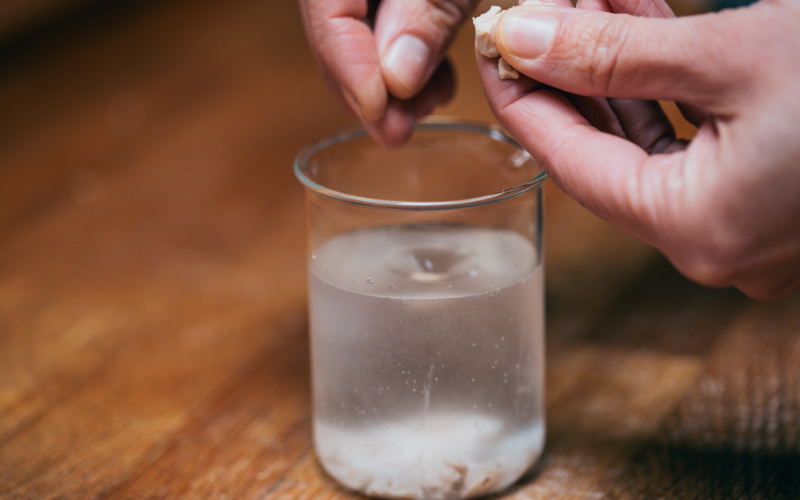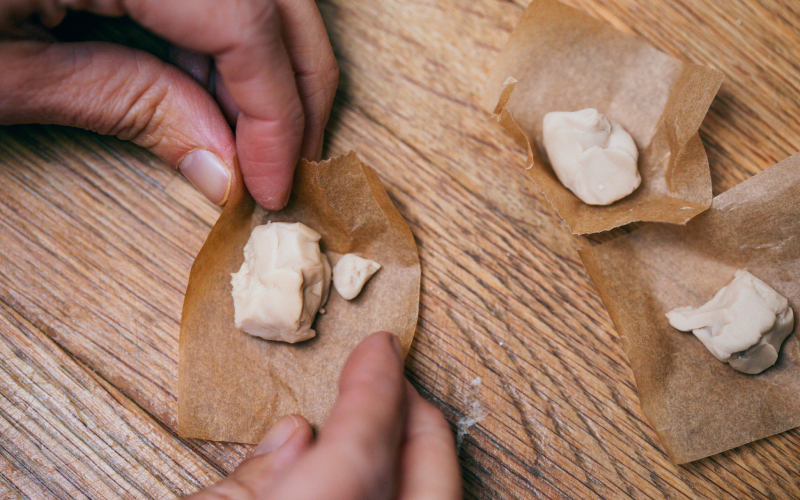Fresh yeast
Fresh yeast, also known as compressed yeast or cake yeast, is an active yeast. Fresh yeast is made up of about 70% moisture and is commonly used by professional bakers. It is light beige in color, soft, and has a crumbly texture. Fresh yeast has a sharper smell than dry yeast. This type of yeast can be found in the refrigerated section of many supermarkets.
The only real difference between fresh yeast and dry yeast is moisture content: It’s approximately 70% for fresh yeast and 6% for dry yeast. Because there is such a difference in moisture content between the two, the dried yeast is more concentrated than the fresh yeast. For this reason, you should use three times more fresh yeast in dough recipes that call for dry yeast.
The optimum temperature range for yeast fermentation is between 90˚F-95˚F (32˚C-35˚C). Going above 130°F (54°C) can seriously damage your yeast, so use it with caution.
But the question remains: Why use fresh yeast? The answer is simple; fresh yeast has a better taste.
When it comes to making dough, you might choose to dissolve the yeast in water before proceeding with your recipe. You could also crumble fresh yeast right into the flour. Both ways will work.

Unlike dry yeast, fresh yeast does not have a long shelf life. It will last for about two weeks if kept in the refrigerator. If you do not use it on a daily basis you may want to freeze it. It would be a pity to have to throw away the yeast after only using it once or twice.
Therefore, divide the yeast into preferred portions. Wrap each portion in parchment paper, and make sure to wrap it tightly to prevent it from drying out. Place the wrapped portions of yeast in a sealable container and pop them in the freezer. This way, the fresh yeast will have a shelf life of about 3-4 months. Let it come to room temperature before using. From now on, you’ll always have plenty of fresh yeast on hand!






